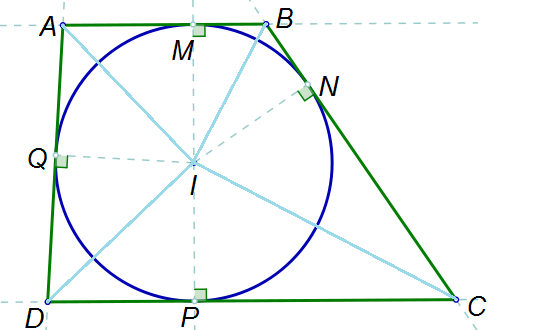Does the formula pr = bh apply to inscribed circles in quadrilaterals? or only triangles?
1 Answer
It depends. But if
is true for any tangential polygon.
Explanation:
Before proving this, note that a tangential polygon is any convex polygon which can have an incircle.
This is an example of a tangential polygon:

Because the sides of the polygon are tangent to the circle the line that goes through the incenter,
Now, what we have visualised is a particular case, where the polygon is four sided. Still, let's solve this first.
Let
Notice how the area,
The simplest formula of the area of a triangle is:
If we take the bases to be the sides of the polygon, then the heights will be the inradii:
We know that, by definition,
The general case is solved analogously. If

